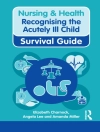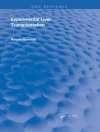This book describes unusual cases of cutaneous lymphomas and is of special interest for clinicians and pathologists dealing with the vexing subject of cutaneous lymphoma. In addition to the case description, it gives the clinical, histological, and in most cases also the phenotypical features and the results of molecular techniques. A commentary puts the observations into the context of cutaneous lymphomas. Related papers are cited. The book will be especially helpful in cases which do not fit into the normal spectrum of cutaneous lymphomas. Rare entities of cutaneous lymphomas are demonstrated with high-quality pictures (4-color) and a concise text in an appealing format throughout the book.
The new WHO/EORTC-Classification of Cutaneous lymphomas includes more than 30 entities of Cutaneous T-cell and Cutaneous B-cell lymphomas.
Table des matières
Mature T-cell and NK-cell Neoplasms.- Familial mycosis fungoides; involving a father and daughter.- A case of mycosis fungoides with polyarthritis showing clonal identity in skin and synovial tissue.- Vesicular mycosis fungoides.- Unusual case of mycosis fungoides clinically mimicking a dermatophytosis subsequently evolving in aggressive CD30- cutaneous lymphoma.- Sclero-atrophic mycosis fungoides with a cytotoxic atypical phenotype.- CD56+ early mycosis fungoides.- Sézary syndrome with t(2;5) translocation, as developed after prolonged cyclosporine therapy for actinic reticuloid.- CD8+ Lymphomatoid papulosis with simultaneous Type A, Type B, and Type C lesions.- Lymphomatoid papulosis with a NK-cell phenotype.- Anaplastic large cell lymphoma associated with acquired ichthyosis.- Anaplastic large cell T-cell lymphoma.- Primary cutaneous histiocyte and neutrophil rich CD30+/CD56+ anaplastic large cell lymphoma of the scalp with prominent angio- and neuroinvasion.- Late relapse of primary cutaneous CD30+ anaplastic large cell lymphoma confirmed by T-cell receptor (TCR) PCR analysis.- Peripheral CD4+ T-cell lymphoma with cytotoxic phenotype.- CD8+ disseminated small and medium pleomorphic T-cell lymphoma with blood involvement and secondary hemophagocytic syndrome.- CD8+ cutaneous T-cell lymphoma with an indolent course.- Primary cutaneous pleomorphic small/medium-sized T-cell lymphoma revealed by a plantar callus.- Atypical poorly differentiated cutaneous T-cell lymphoma with an angiocentric growth pattern.- Angiocentric non-Hodgkin’s lymphoma of the leg.- ?/? cutaneous T-cell lymphoma.- Epidermotropic and subcutaneous ?/? T-cell lymphoma.- Cutaneous T-cell lymphoma presenting as reticular erythematous mucinosis.- Nasal NK-cell lymphoma preceded by a puffy eyelidand swollen cheek due to intramuscular infiltration of Epstein-Barr virus-infected cells.- Epstein-Barr virus-associated lymphoma mimicking hydroa vacciniforme: Final diagnosis of a case reported in 1986.- Epstein-Barr virus-positive blastoid NK-cell lymphoma.- Mature B-cell Neoplasms.- Primary cutaneous marginal zone B-cell lymphoma with secondary anetoderma in a patient with Sjögren’s syndrome.- Follicular lymphoma with follicular dendritic cell overgrowth.- Diffuse large B-cell lymphoma with cutaneous and ocular involvement.- EBV-positive cutaneous B-cell lymphoproliferative disease after imatinib mesylate (Glivec).- B-cell chronic lymphocytic leukemia revealed by an erythroderma.- B-cell chronic lymphocytic leukemia (B-CLL) at the site of Borrelia burgdorferi infection.- Scarring leukemia cutis.- Lymphoma-associated insect bite-like reaction arising in a patient with mantle cell lymphoma.- Immature Hematopoietic Malignancies.- Blastic NK-cell lymphoma.- Subcutaneous splenosis of the abdominal wall.- Post-transplant lymphoproliferative disorder.












